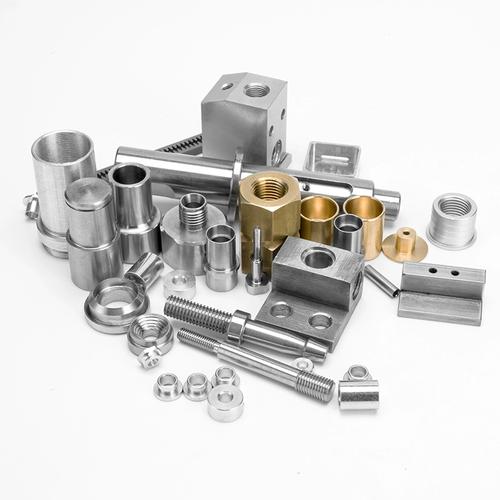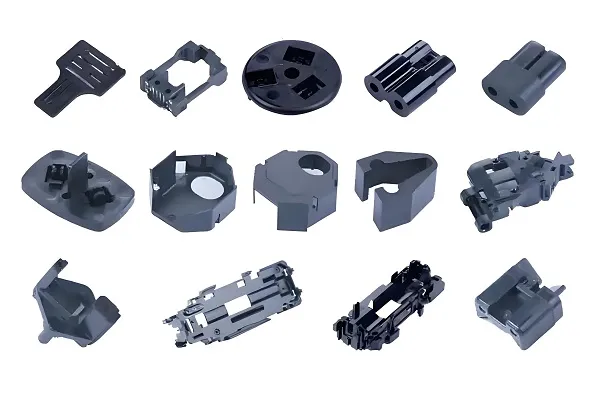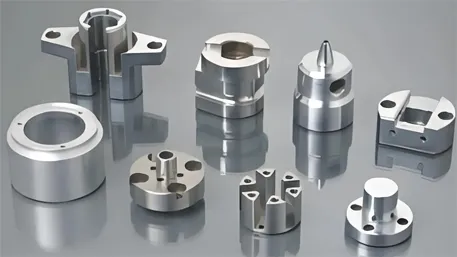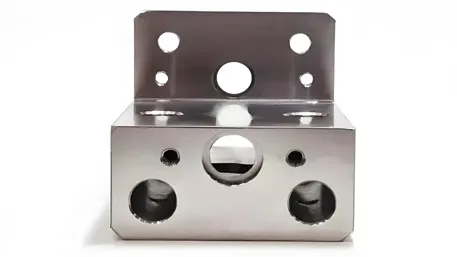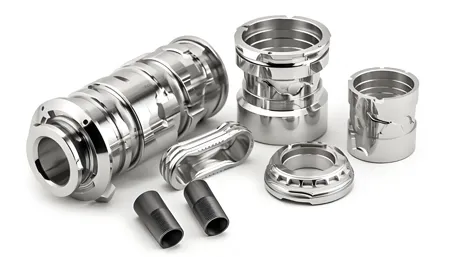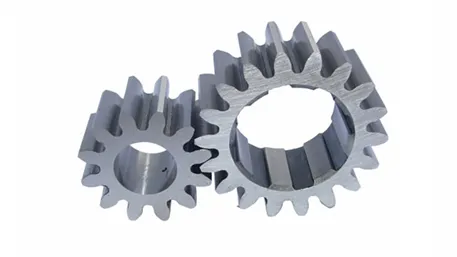1. Material Science Paradox: The Hidden Cost of “Exotic” Alloys
CNC parts often require specialized materials like titanium, Inconel, or medical-grade stainless steel to meet performance standards. While these materials offer superior strength or corrosion resistance, their market prices fluctuate dramatically. For instance, aerospace-grade titanium costs 30–30–50/kg, 3–5x more than aluminum10. Additionally, machining hardened alloys increases tool wear by 40–60%, necessitating frequent tool replacements (e.g., carbide end mills costing 150–150–300 each)210. This creates a paradox: material innovation drives performance but also inflates costs due to supply chain volatility and machining complexity.
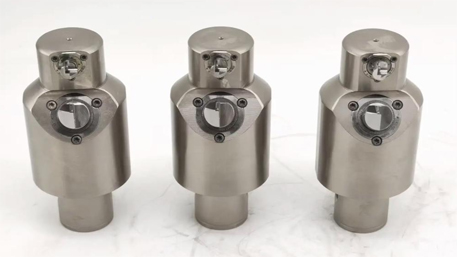
2. Multi-Axis Complexity: Precision vs. Energy Consumption
5-axis CNC machines enable intricate geometries but consume 20–30% more energy than 3-axis systems. A study showed that a 5-axis mill operating at full capacity uses ~25 kWh, costing 150–150–200 daily in electricity alone210. Furthermore, programming multi-axis paths requires advanced CAM software (e.g., Mastercam or Siemens NX), with annual licenses costing 10,000–10,000–50,000 per seat. The “invisible” costs of energy and software licensing often account for 15–20% of total part pricing.
3. The “Simulation Tax”: Validating Perfection
Modern CNC workflows rely heavily on simulation tools like ANSYS or Moldflow to predict machining errors. While these tools reduce physical prototyping, they add a “simulation tax”: a medium-sized automotive component might require 50–100 hours of computational analysis, costing 2,000–2,000–5,000 in engineering time513. For low-volume production, this upfront cost disproportionately impacts per-unit pricing.
4. Post-Processing Overhead: The Unseen Labor
Few customers realize that CNC-machined parts often undergo 3–5 post-processing steps (e.g., anodizing, polishing, or heat treatment). For example, achieving a medical-grade Ra 0.1μm surface finish on stainless steel adds 8–12 hours of manual labor per part, increasing costs by 25–40%810. Automated solutions like robotic polishing exist but require $500,000+ investments, making them viable only for high-volume orders.
5. Customization vs. Economy of Scale: The Breakeven Dilemma
CNC excels at customization, but small batches face a breakeven hurdle. Data from U.S. machine shops reveals that producing 10 units of a complex aerospace bracket costs 1,200/unit,while1,000unitsdropthecostto1,200/unit,while1,000unitsdropthecostto280/unit due to amortized setup and programming expenses10. This nonlinear pricing model explains why prototyping is often 5–8x costlier than mass production.
6. Regulatory Compliance: The Cost of “Green” Machining
EU and U.S. environmental regulations (e.g., RoHS, REACH) mandate strict waste management and coolant recycling. For instance, disposing of contaminated metal chips costs 200–200–500/ton in the EU, compared to 50–50–100/ton in unregulated markets210. Additionally, switching to biodegradable coolants increases fluid costs by 30–50%. These compliance-driven expenses add 10–15% to final part prices.
7. Technological Obsolescence: The Hidden Depreciation
CNC technology evolves rapidly. A 2018 5-axis machine with ±0.005mm accuracy may lose competitiveness by 2025 due to newer models with AI-driven error correction. Machine shops face a dilemma: upgrading equipment every 5–7 years (at 500,000–500,000–2M per machine) or risking slower cycle times and higher defect rates210. This depreciation burden is often passed to customers as a 5–10% price premium.
CNC Custom Part Q&A
Q1: Why do small-batch orders cost significantly more?
A: Low-volume production cannot amortize upfront costs (CAM programming, tooling setup), which account for 40–60% of total expenses10.
Q2: How to reduce lead times for urgent projects?
A: Opt for shops with modular tooling systems (e.g., HASCO standards) and in-house post-processing, cutting delivery times by 30%810.
Q3: Are there alternatives to exotic materials for cost-sensitive projects?
A: Hybrid designs using aluminum cores with hardened steel inserts can reduce material costs by 20–35% while maintaining performance10.
Q4: How to ensure compliance with EU/U.S. sustainability standards?
A: Partner with ISO 14001-certified suppliers who document material traceability and waste recycling processes10.
Q5: What’s the ROI of AI-driven CNC machines?
A: AI reduces programming time by 50% and scrap rates by 15–25%, achieving breakeven within 2–3 years for high-mix production213.
This analysis reframes CNC costs as a interplay of technological ambition and economic pragmatism, offering actionable insights for balancing performance, compliance, and budget. For tailored solutions, consult certified CNC providers with transparent cost-breakdown frameworks.

